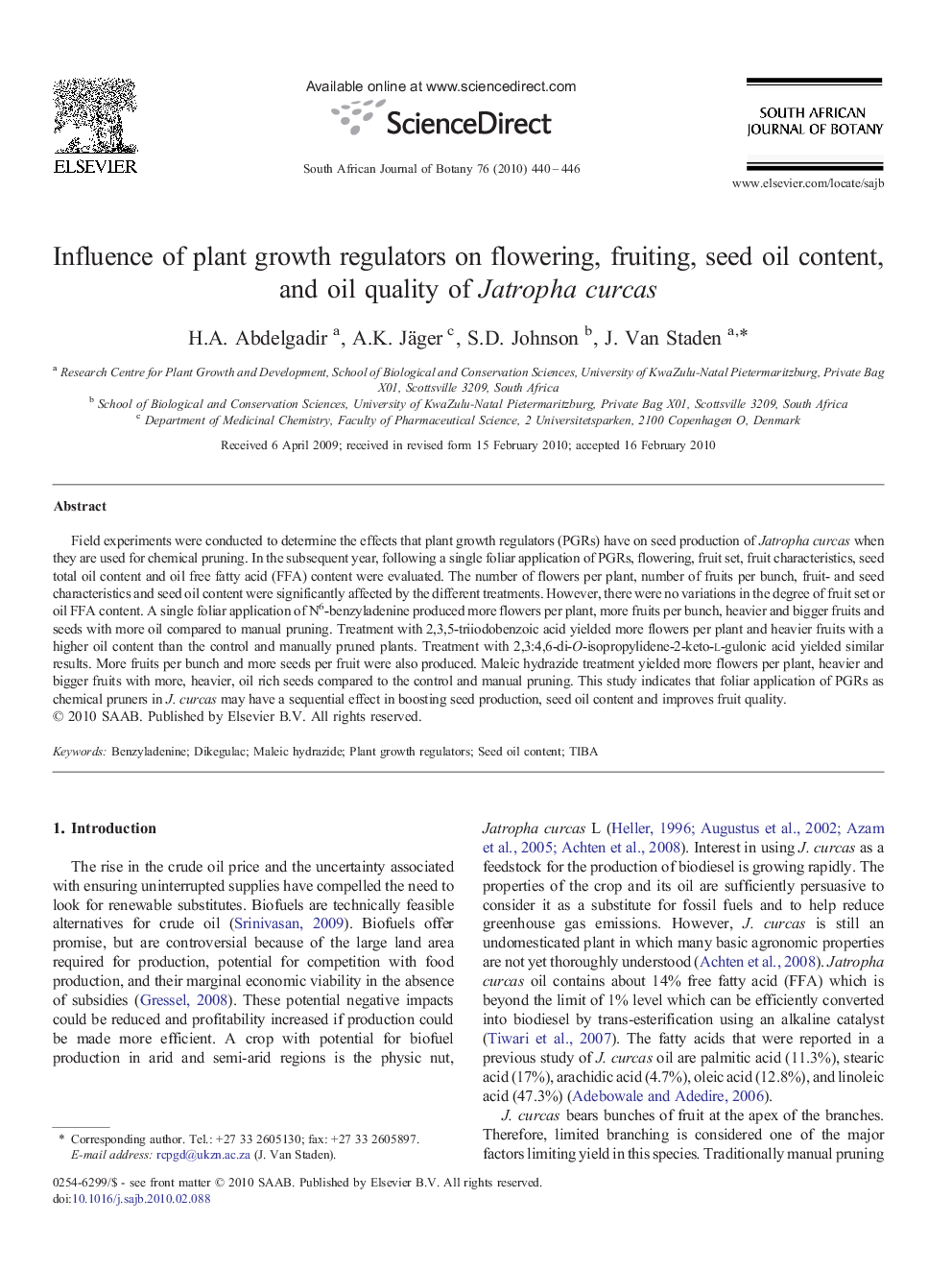| Article ID | Journal | Published Year | Pages | File Type |
|---|---|---|---|---|
| 4521625 | South African Journal of Botany | 2010 | 7 Pages |
Field experiments were conducted to determine the effects that plant growth regulators (PGRs) have on seed production of Jatropha curcas when they are used for chemical pruning. In the subsequent year, following a single foliar application of PGRs, flowering, fruit set, fruit characteristics, seed total oil content and oil free fatty acid (FFA) content were evaluated. The number of flowers per plant, number of fruits per bunch, fruit- and seed characteristics and seed oil content were significantly affected by the different treatments. However, there were no variations in the degree of fruit set or oil FFA content. A single foliar application of N6-benzyladenine produced more flowers per plant, more fruits per bunch, heavier and bigger fruits and seeds with more oil compared to manual pruning. Treatment with 2,3,5-triiodobenzoic acid yielded more flowers per plant and heavier fruits with a higher oil content than the control and manually pruned plants. Treatment with 2,3:4,6-di-O-isopropylidene-2-keto-l-gulonic acid yielded similar results. More fruits per bunch and more seeds per fruit were also produced. Maleic hydrazide treatment yielded more flowers per plant, heavier and bigger fruits with more, heavier, oil rich seeds compared to the control and manual pruning. This study indicates that foliar application of PGRs as chemical pruners in J. curcas may have a sequential effect in boosting seed production, seed oil content and improves fruit quality.
